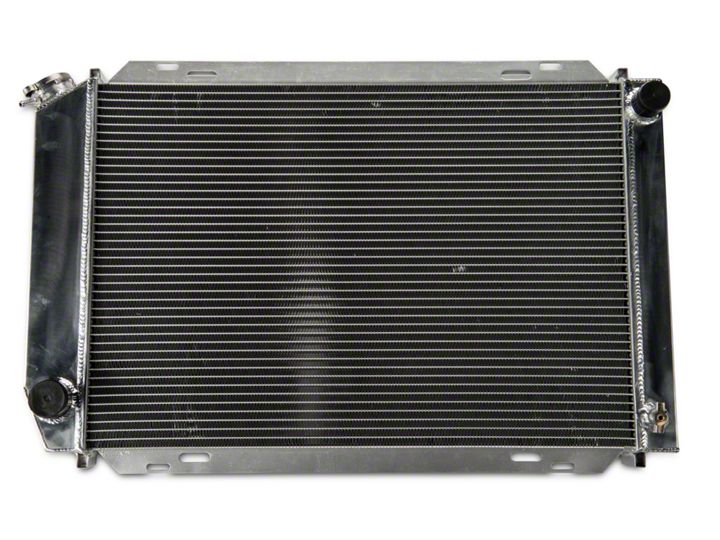
How to Install SR Performance Aluminum Radiator - Manual on your Mustang

Shop Parts in this Guide
1. Ensure the engine/coolant is cold. **Performing any work on the cooling system of your vehicle while it is hot can result in serious injury/burns.
2. Drain the cooling system into a suitable drip pan. **Coolant is considered hazardous waste, check with your local recycling/waste management facilities for disposal options.
3. Disconnect any and all hoses connected to the radiator.
4. Automatic transmission vehicles. **if equipped from the factory with an integrated transmission cooler. It will be necessary to use and aftermarket transmission cooler. Remove the transmission cooler lines. Most aftermarket aluminum radiators will require use of an aftermarket transmission cooler. **Note: SR Performance does offer aluminum radiators with integrated transmission coolers for some applications.
5. Remove the radiator mounting bracket bolts. In most cases the radiator is bolted to the radiator support using brackets. In some instances the shroud is part of the radiator mounting bracket.
6. Remove the radiator from the vehicle. **In some cases it may be necessary to remove the radiator fan shroud from the radiator before removing it from the vehicle. If necessary, remove the radiator fan shroud from the radiator. The fan shroud may be bolted/clipped onto the radiator.
7. Once removed, compare the replacement aluminum radiator to the stock radiator. Ensure the inlet and outlet locations are the same. **If Applicable, transfer any addition mounting tabs to the new radiator. **Note: Aluminum radiator don’t always use all of the mounting tabs the OE equipment. It may not be necessary to use every/all factory mounting locations for the fan shroud.
8. Transfer the rubber isolators from the factory radiator to the new radiator. **Note: Isolators maybe stuck to the radiator support in the vehicle. Just make sure that when reinstalled the radiator has an isolator on both sides.
9. Reinstall the aluminum radiator in reverse order.
10. Ensure to bleed the coolant system of any and all air. Trapped air can cause the vehicle to overheat. **Note: Reference your vehicle specific procedure for bleeding the coolant system.

